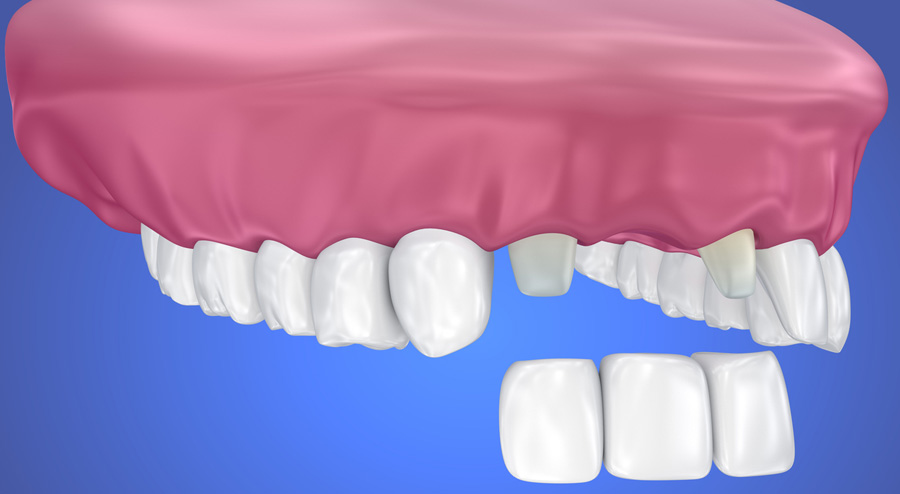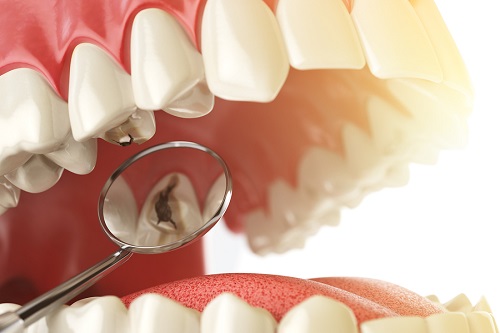What is Tooth Cement and How Does It Work?

Tooth cement can actually come in several forms such as resin cements, luting cement, polycarboxylate cement, glass ionomer cement, and temporary cement, but they have a similar goal. Simply put, tooth cementation is used to ensure that two things are kept joined for as long as the dentist needs them to be. For example, braces tend to be kept on for a year or two at a time. The brackets are, therefore, adhered to the teeth with tooth cement. Crowns need to stay in place for longer than that so, of course, tooth cement is used to bond them to what remains of the underlying tooth. This stuff is extremely strong and reliable, much like cement on a sidewalk.
How does it work?
The basic concept of using cementation starts with mixing a dry ingredient with a wet one and then working quickly to apply the mixture to the area that needs adhesion. It usually does not take very long for the cement to set, unlike other adhesives. Therefore, the procedure can be done quickly and with minimal downtime before the patient can eat or drink. The curing and adhesiveness actually do not happen because of the cement “drying out” but instead is the result of a chemical reaction between the wet and dry elements. When the cement cures, it hardens and bonds with the surfaces that it is touching, so if two different surfaces have a layer of cement between them that cures, they then adhere.
Some resin-based cement types will have the curing process helped along at the dentist office with the use of a light-curing tool. These are usually halogen or LED lights that emit light which is on the visible blue light spectrum. The purpose of this light is to act as a catalyst for the curing chemical reaction. Before this procedure was discovered, resins were subject to quick and uncontrolled curing times and were rarely used. This is why metal materials used to be the go-to for fillings. The development of light-activated resin allowed dentists to have much more control over when and where the resin would set. For this reason, resin-based cements are extremely popular. For more on the physics of how this works, take a look at this article.
Tooth cement shares some similarities with the kind of cement you might find outside your home, but there are certain key properties that have been developed specifically for use in oral applications.
It must be resistant to saliva specifically and fluids in general.
- It must not be irritating to the mouth tissues or the pulp of the tooth. Cement tends to be slightly acidic which is understandably irritating. However, tooth cement is made of polycarboxylate which rises in pH after setting, reducing the acidity and becoming tolerant to the various biological surfaces found in the mouth.
- It must be strong enough to resist the forces of chewing.
- It must be aesthetically pleasing, so most cements tend to be translucent or close to the same color as enamel.
- It must have the proper opacity to show up on X-rays and radiographs.
There may be other desirable properties depending on the brand, such as being antibacterial, hypoallergenic, and able to create a reliable seal.
There are also special cases where a particular cement might be used for a specific property. For example, some tooth cements are made only for temporary use. These might be formulated to either be more brittle and therefore easy to break off when the time comes or they might have a specific liquid solubility property. If there are other materials being used in the procedure then the dentist will want to use a tooth cement that is made specifically to bond well with it, such as when attaching a metal appliance or when needing to bond to a composite material.
These are the most common procedures in which tooth cement may be used:
1. Cavities – When a cavity needs to be filled, the dentist will first drill out any decay that might be present. Failure to remove all the decay will result in the tooth continuing to deteriorate underneath the filling and may lead to serious nerve and jaw damage. The opening is then filled with tooth cement. If the bond between the cement and tooth breaks down the cavity may reoccur.
2. Braces – Individual brackets are affixed to the teeth with tooth cement and a wire is run through and attached to them. This wire is then replaced regularly to encourage teeth to shift in a way that produces a straighter smile. Sometimes a bracket can pop off, at which point it will be reattached with more cement.
3. Appliances – There are several types of dental appliances which may be installed for a period of time to move the teeth around. They are attached to the teeth with cement and include an adjustment mechanism that will change the jaw in a way that the dentist is targeting, such as widening it.
4. Tooth Replacements and Repairs – If a tooth becomes damaged or needs to be removed, the subsequent repair or replacement is done with the aid of tooth cement. It can hold crowns, bridges, and implants in place by bonding the material with the underlying tooth or bone.
Tooth cement is one of the most versatile tools in a dentist’s arsenal and is one of the most important advancements we have made in modern dentistry. Without it, seemingly simple problems like cavities and chipped teeth would be much worse and we would all be in a lot of pain.
Medically Fact-Checked & Written by Our Dental Editorial Team
You can read more about our editorial guidelines by clicking this link and learn more about the Emergency Dentists USA editorial team here.


